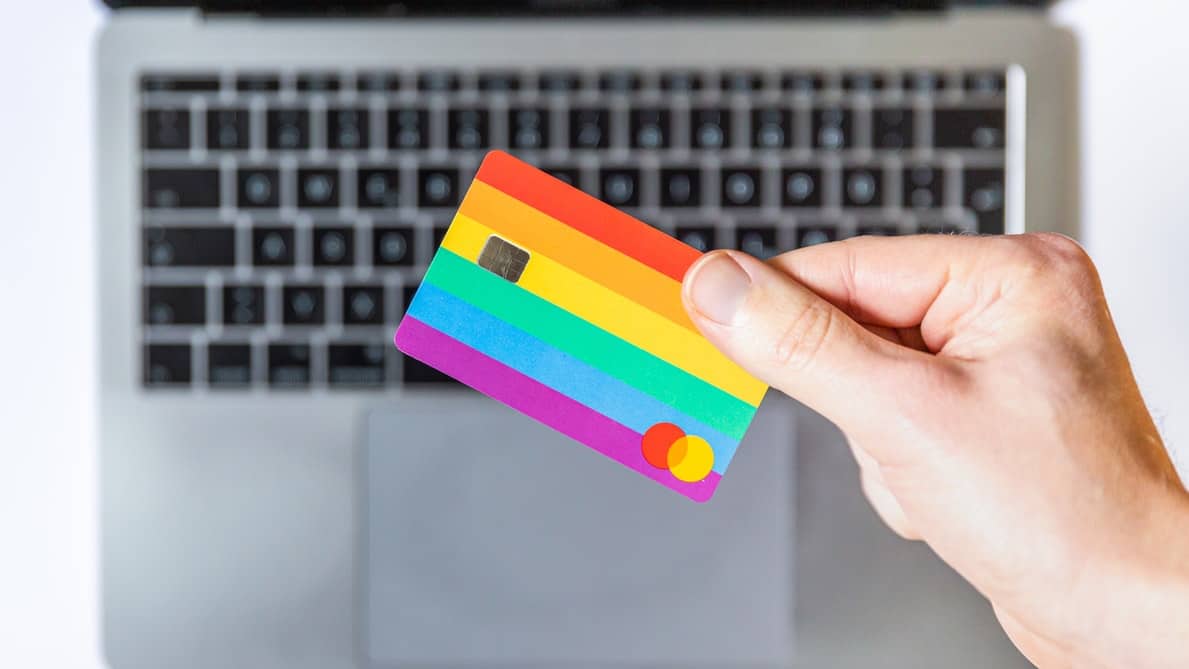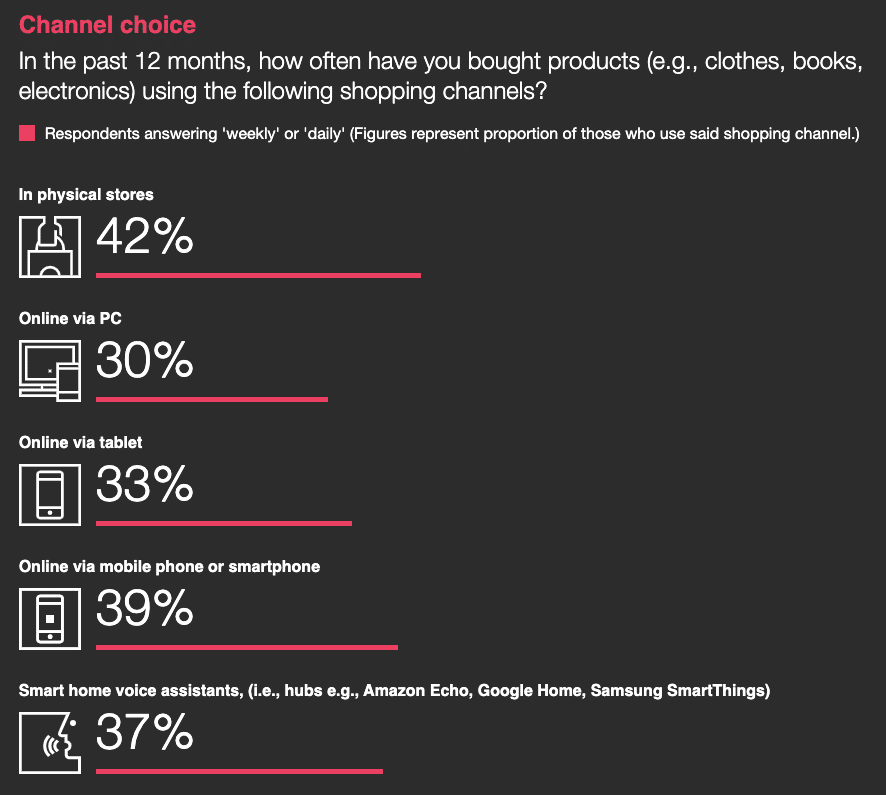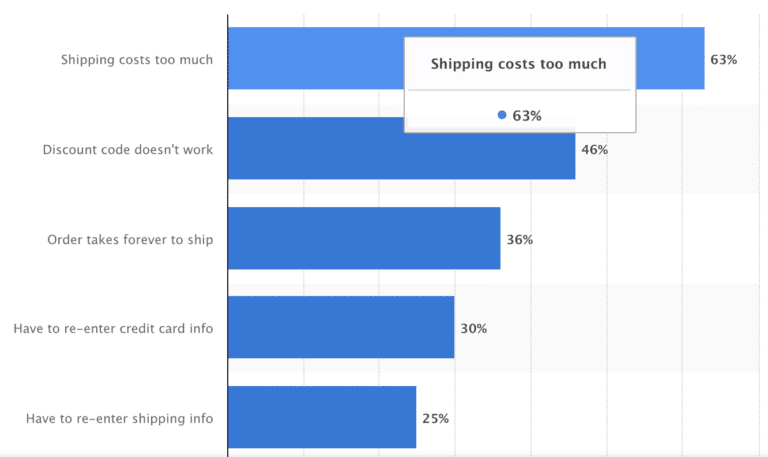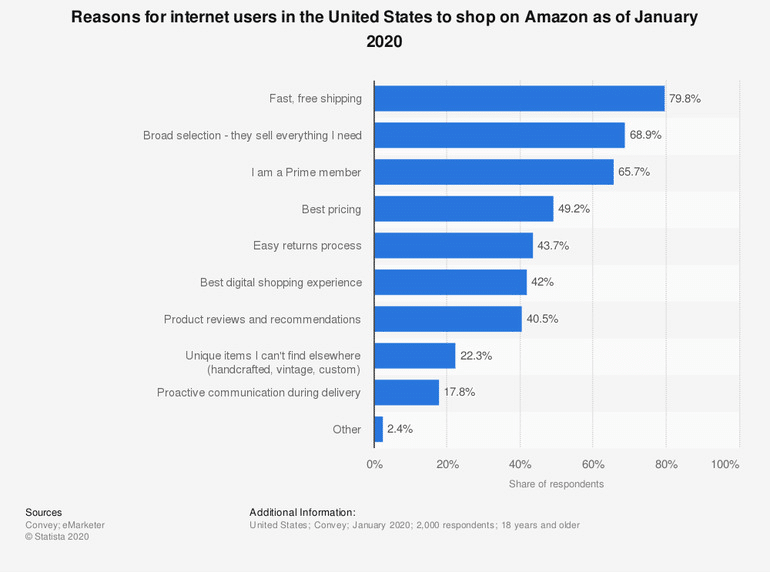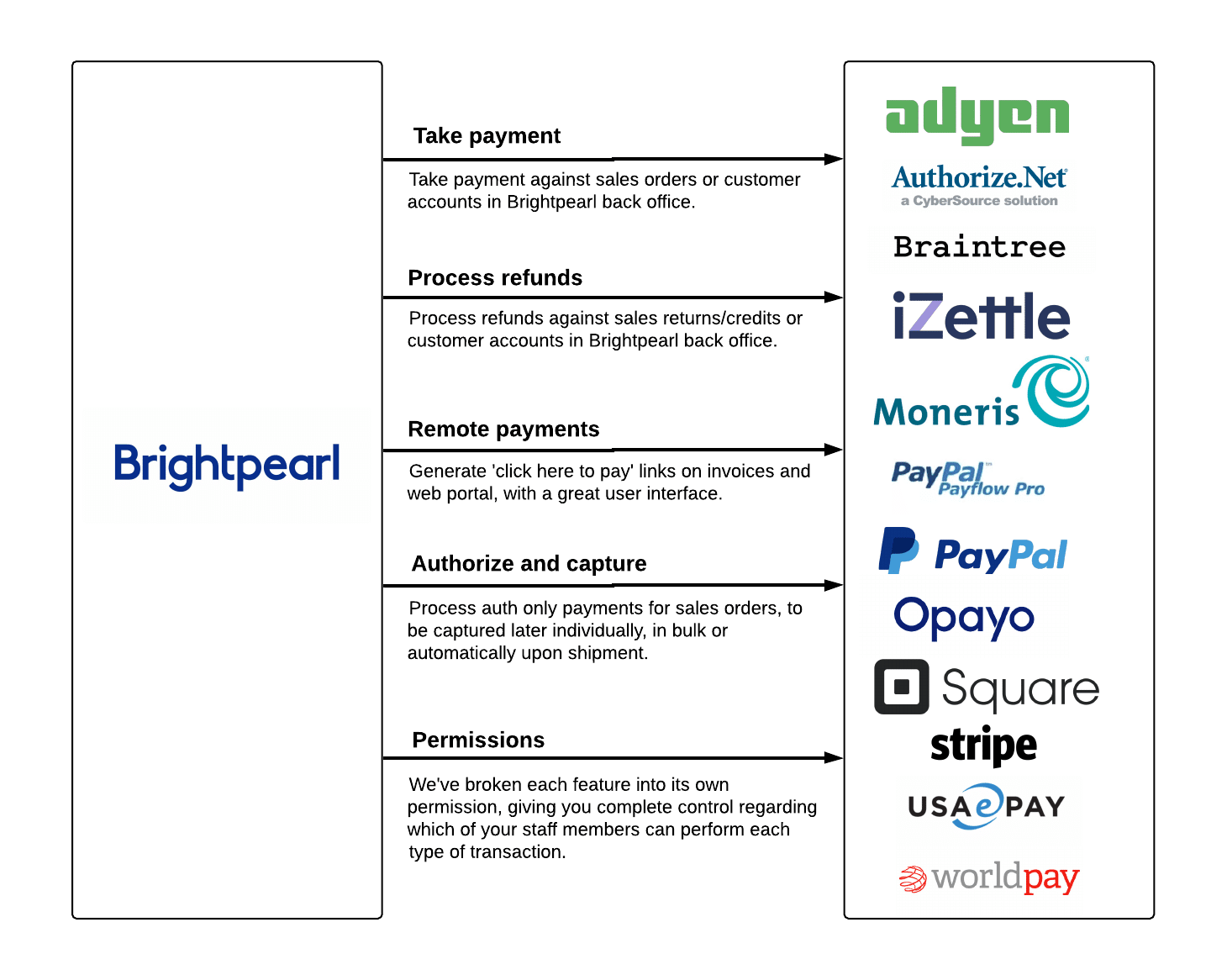If you’ve ever bought an item online, then you’re aware of the anxieties of awaiting your product’s arrival. An online shipping experience can go terribly wrong pretty easily. You can receive the wrong item. The product can arrive damaged or in poor condition. Even worse… your order never arrives at all!
These shipping experience flops happen very often, and these can really put a dent in online retailers’ profits. How can you improve your online buyers’ shipping experience and avoid lost, incorrect or late product deliveries? Let’s take a look.
The Importance Of Optimizing Your Online Buyers’ Shipping Experience
There is no question about it—good delivery and shipping experiences are important in the 2021 ecommerce business landscape and how to sell products online.
The COVID-19 pandemic transformed customers’ shopping habits and needs, and drove a lot of buyers to online shopping and ecommerce platforms. Locked in and staying at home, consumers needed retailers to develop speedier delivery and shopping options to bring the world to their doorstep. As Coronavirus remains a global issue—and, most probably, even in the post-COVID world—delivery and shipping cement their place as vital areas of ecommerce operations.
Not only is a good shipping experience something businesses have to consider as a response to COVID-19, but it’s also one of many trends in digital business that has evolved in recent years. Changes and evolutions in technology have led to brilliant online services rising very high in the list of customers’ expectations.
Online customer experiences and journeys include brand visibility, website optimization, personal data security and much more. When customers consider buying a product from your website, research on your business and products will likely be the first step in their purchase journey.
If they read reviews from past customers stating their disdain and disappointment at your company’s poor shipping experience, then it decreases the chances that they will come and shop with you. And if a customer has already had a discouraging experience, then it is very unlikely they’ll want to shop with you again- and you should brace yourself for a scathing review.
Thus, your shipping experience affects your brand reputation, customer attraction and retention, buyer loyalty and satisfaction and your sales, conversions, and bottom line!
Important Shipping Experience Stats
- The primary reasons why online shoppers abandon their carts: see image above (Statista)
- 64% of millennials are more likely to buy online if the platform offers same-day delivery (PR Newswire)
- 66% of consumers prefer home delivery over other delivery options (Statista)
- In 2020, more than 15 billion deliveries were completed globally (Statista)
- Between May 2021 and August 2021, at least 82% of customers around the world had shopped online (World Economic Forum)
- 55% of US online buyers prefer same-day delivery (Statista)
Factors To Consider When Improving Your Online Shipping Experience
There are many reasons why online shoppers might prefer one company’s shopping and shipping experience over another. According to Statista, some of the key reasons why American users opted to shop on Amazon in January 2020 include good pricing, a brilliant digital shopping experience, and a broad product selection. The top reason was fast, free shipping, with 79.8% of internet users citing this as the key factor in their shopping choice.
From this data, there are three key categories, you need to consider when looking to bring drastic and optimal change to your shipping experience and shipping strategy:
The Product
To get the best out of your shipping plans and choose the right shipping options, you need to consider your product specifications. Analyze the differences in product size and weight for all your different offerings—from the largest and heaviest item to your smallest and lightest. You must also consider your packaging and how it affects the size and weight of your products.
Delivery Destinations
It’s good to have a scope of your delivery destinations. Are you shipping locally or domestically? Do you ship internationally? Where are your warehouse or product storage spaces in relation to your shipping points of departure?
Delivery Options
Which shipping options are suited to your products, destination and other unique company needs? Which delivery options are popular with your customers.
Understanding these three factors enables you to make informed decisions about your shipping. By considering these points, you can create the best shipping experience for your customers. Not only will this analysis and control of your delivery allow you to reduce your shipping costs, it will also lead to more efficient shipping, lower delivery costs, and the best delivery options for your customers.
Let’s break these three factors down even further by taking a look at 12 distinct ways that you can improve your online buyers’ shipping experience and improve your shipping functions.
12 Ways To Drastically Improve Your Online Buyers’ Shipping Experience
1. Evaluate Your Current Shipping Strategies
The first thing you have to do before making any changes to your shipping experience is to reflect on the system you have in place already. How is your shipping experiencing faring? To do this, you can ask yourself the following questions:
- Do your shipping options meet customer expectations?
- How does your shipping experience fare against your competitors’ options?
- Do you have a competent designated team focused on ensuring the efficiency of your system?
- If you’ve set up shipping goals and KPIs, have you been meeting them with your current strategy?
- Is/Are your current shipping option/s the best for your packages and customers?
- Are you spending your designated delivery budget efficiently? Or do you break the budget?
By asking these questions, you can identify the areas you need to improve in your shipping experience.
2. Offer Simple & Clear Shipping Options
A brilliant shipping experience doesn’t begin when you ship the product, or once it’s on its way to the customer. Your shipping experience begins when your customer starts researching your product or visits your site. Customers want to know about their shipping options before they even reach the checkout.
What this means is that you’ll want to give them access to very clear and easy-to-understand shipping options throughout their shopping experience. To do this, you’ll want to use clear, step-by-step delivery instructions or guides. Set up a detailed Shipping page or tab and include explanations under Frequently Asked Questions (FAQs).
It’s also a good idea to find other ways to explain the shipping process—like an explainer video, graphic or table. Making it easier for potential buyers helps you avoid leaving them confused and frustrated to the point that they may change their mind about making the purchase.
Of course, you also want to choose the right delivery options. When deciding on your shipping system, keep in mind your goals, budget and costs, package details, delivery destinations, and customer preferences.
3. Personalize!
In modern day ecommerce, personalization matters! You have to tailor to your customers and make sure that your shipping experience contributes to a brilliant customer experience overall—80% of consumers are more likely to make a purchase from a brand that provides personalized experiences. You need to take your customers’ personal information and order data into account when creating a shipping experience.
For example, if a customer lives very close to your distribution point, it makes no sense to offer them a delivery option that only gets their package to them in a week. You can offer same-day delivery and add value and satisfaction to their experience. In this case, you can offer time slots for customers to choose from available delivery dates and times in their area.
4. Don’t Wing Your Packaging
Packaging is important for the safety and quality of your products. Ensure you have sturdy and safe packaging that prevents tampering. You may also want to include branded features like stickers on your packaging—with recommendations, coupons, vouchers, and other custom and personalized offers attached.
5. Communicate Clearly
What kinds of things should you communicate to your customers to improve their shipping experience?
- The Estimated Delivery Date (EDD)
- The Estimated Delivery Time
- When the product has been shipped
- The progress of the delivery
- When you dispatch the delivery
- The order confirmation
- Proof of delivery
- Proof of payment
- Delivery options—how much each one costs and how each one works
- Any delivery delays
Use a business phone app to keep your communications efficient and speedy.
6. Make Your Post-Purchase Better
After your customer makes the payment, you need to have an efficient way of keeping them informed about their delivery. Your post-purchase shipping experience needs to include communication channels, a way for customers to track their package, and important progress notifications.
Essentially, you need to establish means for you to keep the buyer satisfied and informed from the time they make their payment to the moment they receive their item. Consider scheduling a dial out so you never miss a follow-up call.
7. Improve Your Customer Support
Part of providing the best post-purchase and shipping experience means providing amazing customer support. If your customer needs to contact you, they should be able to—particularly with a great call forwarding tool.
On the other hand, your customer support will also be responsible for maintaining good customer relations and driving excellent communication. You can assign this to your team or you can include this as part of your call-centre operations. Also, use business phone features like call disposition to analyze call outcomes and highlight improvement areas.
8. Use A Shipping Experience Management Channel
For communication and customer support, a shipping experience management channel is a must. There are a variety of customer relationship management and/or delivery software solutions that your business can utilize for this. Important features that you should prioritize when choosing the right channel for you include:
- Communication and connectivity
- Integration features like API
- Route planning and route optimization
- Track and GPS navigation features
- Notifications
- Automation capabilities
- Vehicle and fleet management
9. Complete A Detailed Cost Analysis
At the end of the day, your delivery system needs to contribute to your customer satisfaction and your bottom line. Analyze your cost of delivery, packaging and other delivery tasks to prevent them from hiking up the prices.
10. Test Your Systems
You don’t have to go all-in when trying to figure out whether to permanently implement a shipping experience strategy. You can start by testing the method, alteration, or channel within a smaller segment of your customers or just focusing on one product. Test the system at a small scale, record data and results, and reflect and revise until you attain the ideal results for your business.
11. Introduce Multiple Payment Options
Operating as an online retail platform means you should cater to customers’ expectations around the payment. There are many possibilities for transacting or making a payment today—from PayPal to EFT and more. As a result, you need to identify the best options for your customers and make sure they are available at checkout.
The majority of your customers are likely to prefer credit card, debit card, or internet banking options. However, you may also want to consider other options like PayPal or even Bitcoin as the digital space transforms. Either way, you need to diversify checkout payment options.
12. Establish An Efficient ‘What If’ System
As we’ve established, shipping experiences come with many ‘maybes’ and ‘what-ifs’. Your drivers could miss the customer. Products can go missing during shipping. Or customers can receive damaged products or items they want to return or exchange. For your shopping experience, you need to be prepared for these situations.
Create clear policies and systems to deal with such situations efficiently. By staying prepared for possible returns, exchanges, no-show deliveries, and damaged goods, then you can ensure that there is no delay in resolving these issues.
Final Thoughts
An efficient, speedy, and cost-friendly shipping experience is intrinsic to creating amazing and personalized customer experiences and journeys. Improving your shipping experiences boosts your customer retention and attraction, conversions and sales, reputation and digital PR, and your bottom line. With these 12 tips, you can offer better shipping for your products, for a seamless and wonderful delivery experience.

